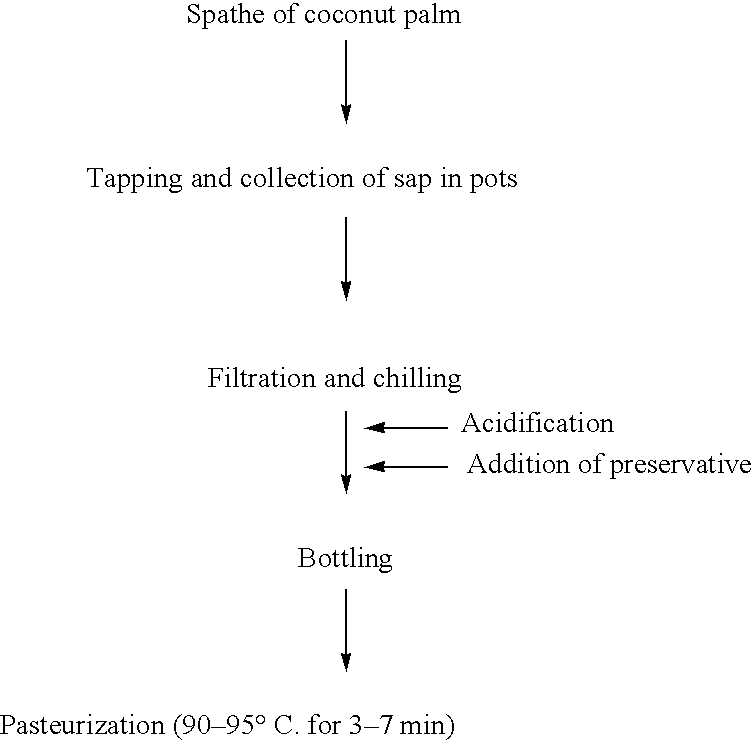Process for the preservation of coconut sap (neera)
- Summary
- Abstract
- Description
- Claims
- Application Information
AI Technical Summary
Benefits of technology
Problems solved by technology
Method used
Image
Examples
example 2
[0032] Coconut sap (10 L) was collected from the coconut farm in the early morning, transported to the laboratory in the mobile chiller (4.degree. C.) (designed by CFTRI). The sap was analysed for pH and solids content (4.3 and 15.degree. brix). The sap was mixed with citric acid (0.045%) and nisin (10 ppm), filled in glass bottles (200 ml) with a headspace of about 10 ml, crowned and pasteurized at 95.degree. C. for 5 minutes. The bottles were cooled to ambient temperature (27.degree. C.). The sap had a characteristic cloudy appearance of `neera`, devoid of the fermented odour without any sedimentation.
example 3
[0033] Coconut sap (30 L) was collected from the coconut farm in the early morning, transported to the laboratory in the mobile chiller (4.degree. C.) (designed by CFTRI). The soluble solids content and pH of the coconut sap was 15.degree. brix and 4.76 respectively. The sap was mixed with citric acid (0.09%) and nisin (10 ppm), filled in glass bottles (200 ml) with a headspace of about 10 ml, crowned and pasteurized at 95.degree. C. for 5 minutes. The bottles were cooled to 27.degree. C. The sap had a characteristic cloudy appearance of `neera`, devoid of fermented odour without any sedimentation.
PUM
 Login to View More
Login to View More Abstract
Description
Claims
Application Information
 Login to View More
Login to View More - Generate Ideas
- Intellectual Property
- Life Sciences
- Materials
- Tech Scout
- Unparalleled Data Quality
- Higher Quality Content
- 60% Fewer Hallucinations
Browse by: Latest US Patents, China's latest patents, Technical Efficacy Thesaurus, Application Domain, Technology Topic, Popular Technical Reports.
© 2025 PatSnap. All rights reserved.Legal|Privacy policy|Modern Slavery Act Transparency Statement|Sitemap|About US| Contact US: help@patsnap.com

